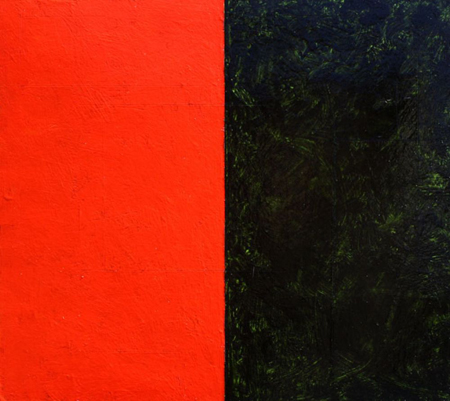
Continuing through October 18, 2013
For his "Dualities Series," Tim Jag pairs brilliant color with rich black — a match-up that for the artist is unavoidably evocative. Explains Jag, “Black is internal and mysterious, whereas the experience of color is comparatively relatable. These paintings are very much about movement — creating and destroying over and over, being willing to do things differently if it doesn’t work out the first time.”
For the past decade, Jag has made New Mexico his home. Among its attributes, the artist muses that “an empty room feels pretty good here, and you can’t say that about everywhere.” When the Idaho-born artist lived in San Francisco in the 1990s, he was immediately drawn to what he calls the “historical relevance” of Bay Area master Richard Diebenkorn. He is also influenced by the unabashedly color-heavy work of Frank Stella and Gene Davis.
Works like "Modernisme Verde" support Jag’s assertion that his practice relates to a quintessentially American lineage of hard-edge, geometric art. The smallish painting is divided into two segments; one a jarring chartreuse, one bluish-black. A suite of larger works employ densely wrought, scribbled backgrounds, which Jag calls “organic and random, like I’m mapping out the canvas.” A particularly successful example of this is "Luna Negra Noche," whose hushed, organic whites overlaid with solid chunks of black and grey recall both the minimalism of Robert Ryman, and the geometric sensibilities of Albers or Mondrian. Jag’s deft interplays of geometry and color form compositional relationships that are cunningly arranged and quietly felt.
